
That stuff sure packs a punch. >;]
Category Artwork (Traditional) / All
Species Wolf
Size 795 x 590px
File Size 180.2 kB
Another beautiful picture. I like the feeling and humor in this picture, and how his clothes seem to be too worn and falling apart. ^^ But there is one thing that seems off. The eye looks unfinished. The white draws your attention away from the rest of the picture. Might look better if the eye were yellow. Although the more I stare at it, the more it looks fine.. I might just be too tired or something. ^^''
This is probably one of the best "Lupimorph" images I've ever seen. The textures of the well worn coveralls and faded shirt contrast well with the creature's fur textures. To top it all off the image is rendered in the way things appear on a night illuminated by the full moon. Charles Russell, the famous Western Artist once said that painting images at night is the most "Next to impossible" thing to do as the colors are so subtle and washed out. Job well done.
The fur texture is what hits me the most. Everytime I practice painting fur, it comes out like shit, matted or otherwise. I noticed most other "artists" here, (myself included) dont add fur texture AT ALL! They draw a human figure and ruff up a few lines at the shoulders and whatnot. I've taken a few art classes but they never helped me with any technique and I am having some difficulty finding books specializing on painting animals and fur. Any suggestions?
I learned to paint fur from looking at a lot of Robert Bateman artwork, that and sketching tons of little studies from photos and paying attention to how the fur parts in certain places. I don't know that there are any good books just of that topic--everything you need is pretty much in a photo or on your pet if you look for it! ;D
Those who want to see Batman's work online can look here. He has at least one portrait of any of the large North American mammals.
Ah, and found this in "Robert Bateman on Art":
"I also visit zoos and wildlife or waterfowl parks. In using these as photo reference, you must know what happens to captive creatures. Most cats get big bellies, birds often have their primary feathers clipped. Even though one visits the same zoo over and over, there are always surprises of lighting and pose and many other unpredictable factors."
"I have a mirror behind me and I sometimes get up and walk back to the mirror to view the painting in reverse. I got this idea from doing portraits many years ago. If something is ‘out of whack’, you can see it in the reflection. I find that if the painting is going well, it looks better in the mirror; if it has problems, they may become apparent."
" My usual way of looking at the real thing, in order to achieve ‘the ring of truth’, or verisimilitude, is to use photographs. These are mostly in the form of my slides. My viewer is made by Hanimex in Japan, with a small ground glass screen and reflecting mirror. Unfortunately, they stopped making them over 25 years ago. I usually have it mounted on a tripod head with a small LED light shining on the ground glass screen, which is actually plastic.
I can move the tripod so that my eyes don’t have to travel far from the subject reference to the painting. This is very important. The ergonomic relationship of your painting to your paints and reference should be as close as possible. Even a split second delay between seeing your image and putting your eyes on the painting, can lose particularity.
Sometimes I have part of the slide that I can’t see well enlarged on the computer and brightened so that I can see it better. Then I tape that near the appropriate area in the painting. Of course, this obsessive copying of the photo does not go on all the time. As I said, I usually move things around and almost always use many photos - up to 50 - in the average painting. Once I have everything with as much ‘ring of truth’ as I want, I start to take liberties by changing things, eliminating things, playing with light and shade, etc. Towards the end, it may not look like the photos at all.
I could never understand why some artists shrank from using photographs. Many, many years ago, I can remember students asking in hushed tones, “Is it all right to use photographs?” I have never heard of a good reason not to. One person said that it could make your work tight and unexpressive. Well, my wife uses photos for her painting and she is a bold, abstract artist and very expressive. Others whose work is loose and free and painterly do as well. In fact, in the last several decades I don’t ever hear that question. Everybody uses photographs if they are at all interested in realism. Even modernists and post modernists such as Warhol, Rauschenberg and Richter show photo-based paintings which are in the collections of big city museums.
By the way, if you have a subject that does not change much and you are able to work in the field, it can be a wonderful alternative to photography. The real thing is great and has the added benefit of being out in nature with the smells, sounds, and general fresh ambiance. I used to only work in the field and made it a point of honour to never touch a painting after I left the field. Now I go from time to time to work on drawings and paintings ‘en plein air’ with no photo reference. I am usually with a group such as the international “Artists for Nature Foundation” (www.anf-yb.nl). The point is still the same – good reference for your painting - whether in the field or from photos."
Also: Here is Robert Bateman's site, with his own catalog listed by subject.
"I also visit zoos and wildlife or waterfowl parks. In using these as photo reference, you must know what happens to captive creatures. Most cats get big bellies, birds often have their primary feathers clipped. Even though one visits the same zoo over and over, there are always surprises of lighting and pose and many other unpredictable factors."
"I have a mirror behind me and I sometimes get up and walk back to the mirror to view the painting in reverse. I got this idea from doing portraits many years ago. If something is ‘out of whack’, you can see it in the reflection. I find that if the painting is going well, it looks better in the mirror; if it has problems, they may become apparent."
" My usual way of looking at the real thing, in order to achieve ‘the ring of truth’, or verisimilitude, is to use photographs. These are mostly in the form of my slides. My viewer is made by Hanimex in Japan, with a small ground glass screen and reflecting mirror. Unfortunately, they stopped making them over 25 years ago. I usually have it mounted on a tripod head with a small LED light shining on the ground glass screen, which is actually plastic.
I can move the tripod so that my eyes don’t have to travel far from the subject reference to the painting. This is very important. The ergonomic relationship of your painting to your paints and reference should be as close as possible. Even a split second delay between seeing your image and putting your eyes on the painting, can lose particularity.
Sometimes I have part of the slide that I can’t see well enlarged on the computer and brightened so that I can see it better. Then I tape that near the appropriate area in the painting. Of course, this obsessive copying of the photo does not go on all the time. As I said, I usually move things around and almost always use many photos - up to 50 - in the average painting. Once I have everything with as much ‘ring of truth’ as I want, I start to take liberties by changing things, eliminating things, playing with light and shade, etc. Towards the end, it may not look like the photos at all.
I could never understand why some artists shrank from using photographs. Many, many years ago, I can remember students asking in hushed tones, “Is it all right to use photographs?” I have never heard of a good reason not to. One person said that it could make your work tight and unexpressive. Well, my wife uses photos for her painting and she is a bold, abstract artist and very expressive. Others whose work is loose and free and painterly do as well. In fact, in the last several decades I don’t ever hear that question. Everybody uses photographs if they are at all interested in realism. Even modernists and post modernists such as Warhol, Rauschenberg and Richter show photo-based paintings which are in the collections of big city museums.
By the way, if you have a subject that does not change much and you are able to work in the field, it can be a wonderful alternative to photography. The real thing is great and has the added benefit of being out in nature with the smells, sounds, and general fresh ambiance. I used to only work in the field and made it a point of honour to never touch a painting after I left the field. Now I go from time to time to work on drawings and paintings ‘en plein air’ with no photo reference. I am usually with a group such as the international “Artists for Nature Foundation” (www.anf-yb.nl). The point is still the same – good reference for your painting - whether in the field or from photos."
Also: Here is Robert Bateman's site, with his own catalog listed by subject.
I learned to paint fur from looking at a lot of Robert Bateman artwork, that and sketching tons of little studies from photos and paying attention to how the fur parts in certain places. I don't know that there are any good books just of that topic--everything you need is pretty much in a photo or on your pet if you look for it! ;D

 FA+
FA+







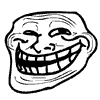


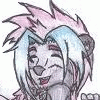



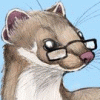
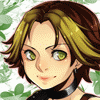

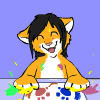


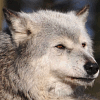







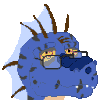
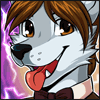
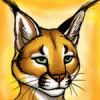
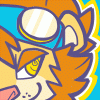








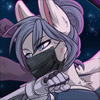




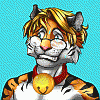







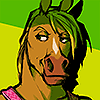
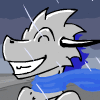
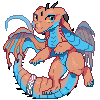


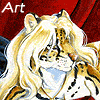


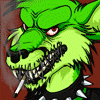










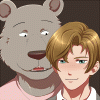






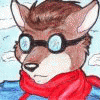
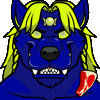






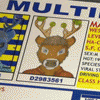

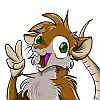
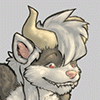
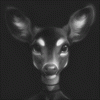







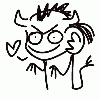

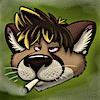






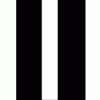


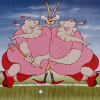
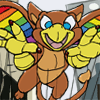

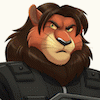






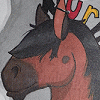



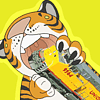



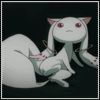



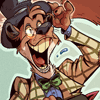

Comments